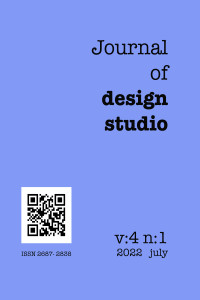Considering Sidewalls as an Architectural Ground: Parasitic Architecture Approaches in Design Studio
Abstract
Approaches mimicking nature constitute a biopolitical specific area in architecture. Today, what is called parasitic architecture is also accepted as one of these biopolitical approaches. Parasitic architecture follows the path of parasitism in nature in terms of biomimicry. And parasitism is accepted as one of the symbiotic lifeforms, others being commensalism and mutualism. They all consist of the biological relationship between distinct organisms where parasitism specially defines duality between a harming parasite and a vulnerable host. Talking in architectural terms, here the parasitism defines an additional structure that can only exist via clinging to a preexisting one. These clinging mechanisms or reflexes can be listed as “sticking”, “climbing”, “holding”, “fixing”, etc.
This study aims to evaluate the architectural parasitism phenomena as a case study for the design studio. As known, the design studio is the backbone of architectural education, which is carried on with unique themes each semester. Hence, such a theme was programmed in İstanbul Topkapı University, Interior Architecture and Environmental Design department in the 2021-2022 Spring Semester, to handle the surrounding idle walls in an ad hoc way as hosting structures for parasitic design ideas of the students. As a result of the works, the idle walls were converted into fruitful public backgrounds for creating a large variety of design ideas with distinct functions and structures as well.
Keywords
References
- Bertalanffy, L. (1928). Kritische Theorie der Formbildung. Berlin: Bornträger.
- Deleuze, G. (1968) Différence et repetition; trans. Paul Patton (1995) Difference and Repetition, New York: Columbia University Press.
- Deviren, A.S. (2001). Mimaride Yer: Yapının Araziyle İlişkisinin Kavrsamsallaştırılması, PhD Thesis, İTU, Instıtute of Science, İstanbul.
- Erdil Polat, T.(2017). Postmodern Kültürde Adhokratik Süreçler ve Bir Tasarım Stratejisi Olarak “Adhosizm”. Yapı, 427, 56-63.
- Fırat, L.H. (2006). Mimarlıkta Mobilite Olgusu Üzerinden İnsan Yer ve Yapı İlişkisine Bir Bakış (A Glance at the Relation of Human, Place and the Building out of the Phenomenon of Mobility in Architecture), İTÜ, Institution of Science, Division of Architecture, Master in Science Thesis, İstanbul.
- Foucault, M. (1986). Cinselliğin Tarihi (1986), Trans.: Hülya Turan, Afa Yayınları, İstanbul.
- Hays, M. K. (2000), Theory of Architecture Since 1968. Columbia Univ. Press, Columbia.
- Jencks, C. & Silver, N. (1972). Adhocism: The Case for Improvisation, Doubleday Company MIT Press, London.
- Kronenburg R. (1998). Transportable Environments, E&FN Spon, London.
- Lauhmann, N. (1989). Ecological Communication, Tran.: J.B.Jr., Cambridge Polity Press, Cambridge.
- Lupo E. & Postiglione G. (2009). Temporary Active-Actions As urban re-appropriation Strategies, Occupation (07): Negotiations With Constructed Space, Brighton.
- McDaniel, C.N. (2008). “Strategic Intervention: Parasitic Architecture”, MS Thesis, University of Cincinnati, Department of Research and Advanced Studies.
- Myburg, J. (2014). “MESOPARSITE”, A Symbiotic Affair, Unitec Institute of Technology.
- Norberg-Schulz, C. (1980). Genius Loci Towards A Phenomenology of Architecture, Rizzoli International Publications, New York.
- Sönmez, N. (2004). Durumcular: Muhalefet İçin Bir Mimarlık, Ms Thesis, İTU, Instıtute of Science, İstanbul.
- Şentürk, L. (2013). Mimarlığın Biyo-Politika Sözlüğü (Archi-Bio-Politics), Altıkırkbeş Yayınları, İstanbul.
- Taretto, G. (Director). (2011). Sidewalls (Medianeras) [Film]. Rizoma Films, Pandora Filmproduktion & Eddie Saeta.
- Yorgancıoğlu D. & Seyman Güray, T. (2018). Alternative Approaches in Architectural Design Education: Parasitic Architecture as a Space Design Strategy Megaron, 13 (1): 144-155.
- Zerzan, J. (2004). Gelecekteki İlkel (Future primitive), Trans.: Cemal Atilla, Kaos Yay., İstanbul.
- URL-1, Rakowitz, M. (2006). Retrieved 16.05.2022 from http://www.michaelrakowitz.com
- URL-2, Filho, C. (2018). Retrieved 16.05.2022 from https://www.scandinaviastandard.com/bjarke-ingels-group-and-urban-rigger-bring-student-housing-to-copenhagens-harbor/
Abstract
References
- Bertalanffy, L. (1928). Kritische Theorie der Formbildung. Berlin: Bornträger.
- Deleuze, G. (1968) Différence et repetition; trans. Paul Patton (1995) Difference and Repetition, New York: Columbia University Press.
- Deviren, A.S. (2001). Mimaride Yer: Yapının Araziyle İlişkisinin Kavrsamsallaştırılması, PhD Thesis, İTU, Instıtute of Science, İstanbul.
- Erdil Polat, T.(2017). Postmodern Kültürde Adhokratik Süreçler ve Bir Tasarım Stratejisi Olarak “Adhosizm”. Yapı, 427, 56-63.
- Fırat, L.H. (2006). Mimarlıkta Mobilite Olgusu Üzerinden İnsan Yer ve Yapı İlişkisine Bir Bakış (A Glance at the Relation of Human, Place and the Building out of the Phenomenon of Mobility in Architecture), İTÜ, Institution of Science, Division of Architecture, Master in Science Thesis, İstanbul.
- Foucault, M. (1986). Cinselliğin Tarihi (1986), Trans.: Hülya Turan, Afa Yayınları, İstanbul.
- Hays, M. K. (2000), Theory of Architecture Since 1968. Columbia Univ. Press, Columbia.
- Jencks, C. & Silver, N. (1972). Adhocism: The Case for Improvisation, Doubleday Company MIT Press, London.
- Kronenburg R. (1998). Transportable Environments, E&FN Spon, London.
- Lauhmann, N. (1989). Ecological Communication, Tran.: J.B.Jr., Cambridge Polity Press, Cambridge.
- Lupo E. & Postiglione G. (2009). Temporary Active-Actions As urban re-appropriation Strategies, Occupation (07): Negotiations With Constructed Space, Brighton.
- McDaniel, C.N. (2008). “Strategic Intervention: Parasitic Architecture”, MS Thesis, University of Cincinnati, Department of Research and Advanced Studies.
- Myburg, J. (2014). “MESOPARSITE”, A Symbiotic Affair, Unitec Institute of Technology.
- Norberg-Schulz, C. (1980). Genius Loci Towards A Phenomenology of Architecture, Rizzoli International Publications, New York.
- Sönmez, N. (2004). Durumcular: Muhalefet İçin Bir Mimarlık, Ms Thesis, İTU, Instıtute of Science, İstanbul.
- Şentürk, L. (2013). Mimarlığın Biyo-Politika Sözlüğü (Archi-Bio-Politics), Altıkırkbeş Yayınları, İstanbul.
- Taretto, G. (Director). (2011). Sidewalls (Medianeras) [Film]. Rizoma Films, Pandora Filmproduktion & Eddie Saeta.
- Yorgancıoğlu D. & Seyman Güray, T. (2018). Alternative Approaches in Architectural Design Education: Parasitic Architecture as a Space Design Strategy Megaron, 13 (1): 144-155.
- Zerzan, J. (2004). Gelecekteki İlkel (Future primitive), Trans.: Cemal Atilla, Kaos Yay., İstanbul.
- URL-1, Rakowitz, M. (2006). Retrieved 16.05.2022 from http://www.michaelrakowitz.com
- URL-2, Filho, C. (2018). Retrieved 16.05.2022 from https://www.scandinaviastandard.com/bjarke-ingels-group-and-urban-rigger-bring-student-housing-to-copenhagens-harbor/
Details
| Primary Language | English |
|---|---|
| Subjects | Architecture |
| Journal Section | Research Articles |
| Authors | |
| Publication Date | July 10, 2022 |
| Published in Issue | Year 2022 Volume: 4 Issue: 1 |
This work is licensed under a Creative Commons Attribution 4.0 International License.
The articles published in Journal of Design Studio had been similarity checked by intihal.net

CALL FOR ARTICLES
Journal of Design Studio call for research papers on studios in all disciplines. Please submit your article by using Dergipark online submission system.



